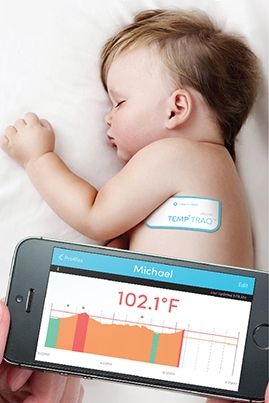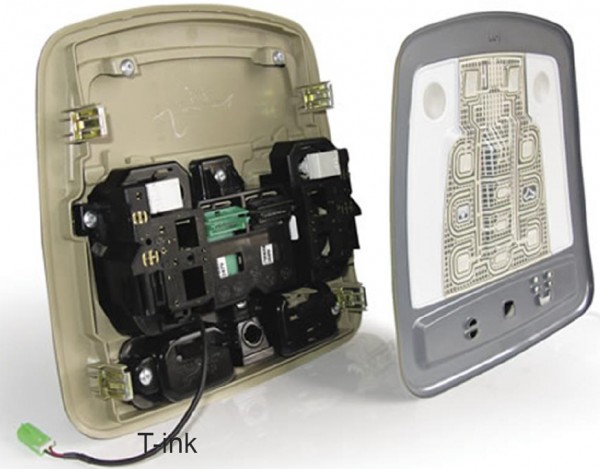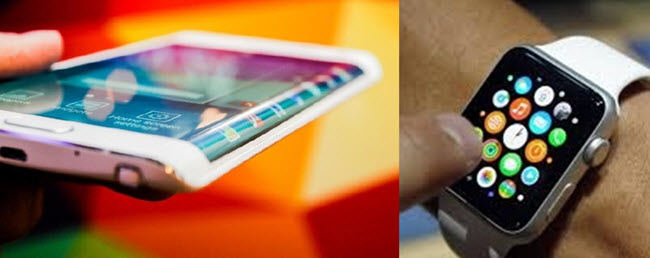Raghu Das, CEO of IDTechEx the organizers of the 2015 Printed Electronics Conference (Santa Clara, CA, November 17-20), delivered an opening keynote at the event, titled “Printed Electronics: Successes, Trends and Money”. In structuring his presentation, Das identified commercial problems for which printed electronics offer and are addressing solutions. The problems he identified spanned the retail, healthcare, wearables, vehicle, and consumer electronics industries.
For the retail industry, a central problem is that top shelf brands are losing market share to store brands, which can offer highly similar products which legally copy brand name products while requiring much reduced development and marketing costs. In light of this situation, brands seek product differentiation as a means to maintain and build customer loyalty. Das cited printed electronics as a means for product developers to address this and related problems faced by brands. His presentation illustrated several means by which printed, flexible and large area electronics are addressing the issues including the packaging in the photo below for Bombay Sapphire gin which features an animated emissive display to enhance customer engagement.
 Source: Bacardi
Source: Bacardi
Das next cited problems in healthcare that are drivers for printed electronics solutions including medication non-compliance, food-related illness, and shelf life limitations. Notably, the healthcare applications of printed electronics cited by Das were not display- or lighting-oriented. Problems with wearable technology are the next opportunity for printed electronics deployment recognized by the speaker. Das claims that flexible electronics will provide a key differentiator in the wearable segment since many of today’s wearable products are bulky rigid devices. For applications in wearables, Das believes the largest challenges are increasing sensor reliability, efficient energy harvesting and storage systems, and making devices “increasingly invisible” to the wearer. As an example of a wearable device employing printed electronicsm, Das referenced BlueSpark’s wearable TempTraq wireless, continuously monitoring thermometer (photo below).
 Source: BlueSpark
Source: BlueSpark
The TempTraq employs a temperature sensor which is coupled to a smartphone via Bluetooth to sense and monitor a person’s temperature for up to 24 hours. It was clear from a subsequent presentation at the event by BlueSpark presenter, Matthew Ream, that the firm intends to develop several extensions of the TempTraq technology to new product applications.
Das next proceeded to identify problems with vehicles that present opportunities for printed electronics. These problems include the weight of wiring and electrical components, the growth in electric vehicles generally, the distributed sensors required for autonomous vehicles, and progress toward totally energy independent vehicles. Das showed a specific example of printed electronics in an automotive application for General Motors (photo below) where an electro-mechanical assembly (left) was replaced with a much thinner, lighter, less costly, molded plastic printed electronics unit (right).
 Source: T-ink
Source: T-ink
In the consumer electronics segment, Das identified a number of problems facing developers. Most notable to me was the need for incremental improvements to enable the design of thinner, more rugged devices with smaller or no bezel around the display. The advance of flexible displays in consumer electronics is evident in several leading edge products including the Samsung Galaxy S6 Edge (below left) and the Apple Watch (below right).

Das continued on to provide an analysis of the market for printed, flexible, and organic electronics. It was clear from his analysis that revenues are still relatively small with a few notable market successes such as printed sensors for glucose test strips which represents the majority of a $6+ billion printed sensor market. Conductive inks used primarily in photovoltaic products are a current $2.3 billion market with forecast growth of 3.3% CAGR to 2020. While the introduction of plastic/flexible OLED displays in smartphones and smartwatches is notable, the vast majority of displays, both OLED and LCD, are not printed, plastic or flexible.
In summary, Das finds the market for printed, flexible and organic electronics to be growing in a diverse number of applications but strong revenue and growth is limited to particular product applications. Looking to the future, Das noted that more large companies such as Qualcomm, Jabil, Flextronics, and others are very active in the field and there continue to be strong recent investments made in the sector. Wearable technology is becoming enabled by advances in printed and flexible electronics. He also observed that 3D printing and printed electronics are coming together, as I noted as it was very evident on the exhibit floor. Newly developed encapsulation and barrier layers are now being used in commercial products. Finally, he sees materials research continuing on perovskite photovoltaics, copper or alloyed metal conductive inks, stretchable inks and molded electronics and 2D materials complementary to graphene. The printed, flexible and organic electronics markets are still relatively small and highly diverse but continue to grow and move in new directions. – Phil Wright

